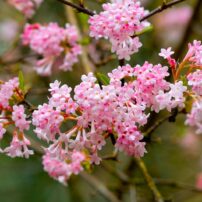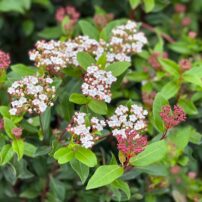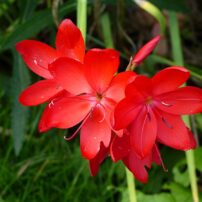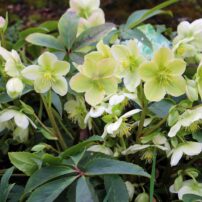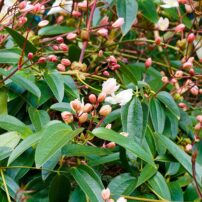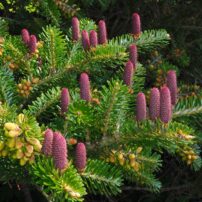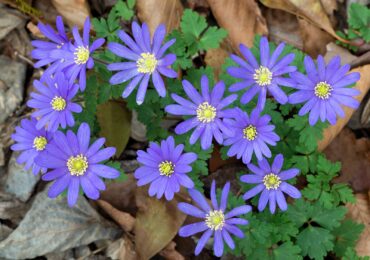
January and February are months when many gardeners enjoy staying cozy inside their homes, mulling through all the seed catalogues, catching up on reading all the cool books on gardening and planning out their veggie gardens for early-spring planting and starting seeds indoors.
It’s also a great time to visit local nurseries to see their plants that can easily be planted in the months ahead and to look for bulbs that are already potted up. Below are a few ideas on plants to find and add to your garden.
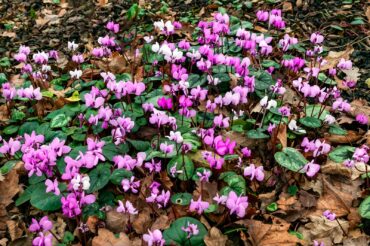
Bulbs
Winter-blooming bulbs are usually planted during October through December because they need cold weather to germinate well. Look for the following bulbs already potted up and if not, make a list and find them and plant them near the end of this year.
Anemone blanda: Usually blooms in intense shades of blue, but you might find some in white and pink. It’s often called wind flowers, grows low to the ground and emerges in late winter to early spring. It will return year after and is a great plant for rockeries. Sometimes sweeps of these bulbs make a great ground cover when nothing else is blooming.
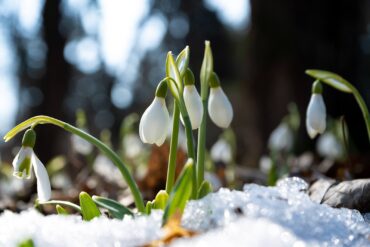
Crocus: This is perhaps one of the most recognized bulbs. Its diminutive flowers emerge early each year in yellow, blue, purple and white. These bulbs, too, return each year.
Cyclamen coum: A much-desired bulb-like plant, it has leaves and blooms that happily return and spread over time. The leaves are splattered with silver hues along with the dark green. The leaves often disappear before the blooms emerge. The plant spreads profusely in containers and in gardens.
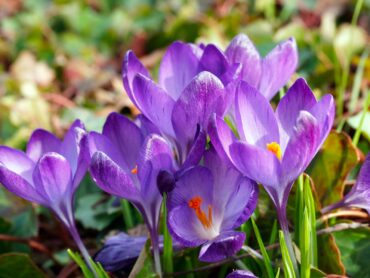
Galanthus: Known as snowdrops, these plants can often be found in January in 4-inch pots at local nurseries. Grab and purchase as many as you can. They are worth every penny and will come back every year. They look best planted in groups. Galanthus are called snowdrops for a reason — they often bloom through the snow.
Muscari (grape hyacinth) and Iris reticulata: Both of these are not to be missed. They may be difficult to find, but can often be ordered by mail. Grape hyacinth has deep, dark blue or deep purple clusters of blooms marching up the stems. They are quite diminutive in stature. Also diminutive is Iris reticulata, quite unlike the taller, larger summer growing and blooming iris. Iris reticulata has small, thin leaves and short-in-stature, single blooms of flowers. Find this bulb and plant it. Sometimes you’ll find it at local nurseries this time of year and with the leaves only at local plant sales later in the spring.
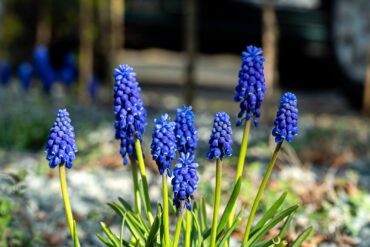
Narcissus: Includes daffodils and miniature ones called tete-a-tete. It might be hard to find daffodil bulbs or potted-up plants for purchase, but you’ll usually find tete-a-tete daffodils at local nurseries and other stores especially this time of year. The tete-a-tete are perfect planted in groupings throughout the garden and grow happily in containers.
Shrubs
This is a great time to look for shrubs. Remember it’s a great time to plant them because Mother Nature will water them for you. If we have a rain-scarce winter, be sure to hand-water them for best chance of survival. Also water them during the dryer summer months. Here are just a few to select from.
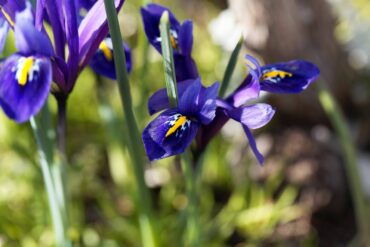
Callicarpa bodinieri ‘Profusion’: A very interesting shrub, it has dark green leaves and can be lanky in growth form. You can prune it to be a smaller shrub or keep lanky, as it blends in with other shrubs in the background. The best part about this shrub that makes it worth having is the clusters of vibrant, bright purple-pink berries starting in October and often lasting into March. Another cultivar, but a hard-to-find version, has white berries.
Camellia sasanqua: Often found as a diminutive grower, this camellia variety has smaller and more open blooms in shades of red, pink and white. It can be grown in large containers or planted directly in the garden. It blooms several months before the more blousy camellias found in many Northwest gardens. Look for one or more of these plants to add to your garden — you’ll be glad you did.
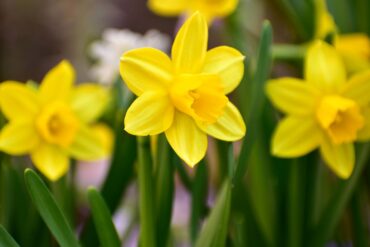
Garrya elliptica: Known by the common name silk tassel bush, this is a great plant. Garden writer and columnist Ketzel Levine best describes this wondrous plant this way: “Garrya’s long, flowering strands resemble tiny teacups stacked upside down, a thumbnail wide and sometimes more than a foot long.” She also recommends purchasing the male of the species or a hybrid that flowers true to form. Levine says the female has nice fruits, but pales in plumage. Cultivars come true to form (i.e., with teacup strands). The leaves are pleated and resemble hazelnut shrub leaves.
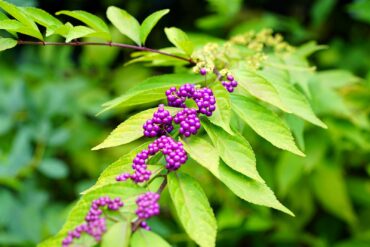
Hamamalis: Commonly known as witch hazel, this plant is much desired for its clusters of flowers festooning bare branches in the dead of winter. From a distance, the flowers look as if someone has strung threads of yarn in groups all over them. Look for the varieties with dark red and gold blooms.
Leucothoe: With variegated leaves in shades of yellow, gold, red and green, this is a great shrub for foliage alone. When searching for this plant, gardeners will find several variations. Look for ones with the most splotches of color on the leaves and for the red stems when possible. One recommended variety is Leucothoe ‘Rainbow.’ The flowers bloom in spring and resemble those of Pieris japonica. In this region, the flowers are rarely seen on this plant.
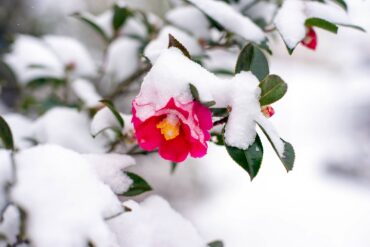
Pieris japonica: Can become a quite large, even tree-like shrub. It’s one of the earliest shrubs to bloom in late winter and is known for providing nectar for emerging mason bee pollinators. Pieris japonica is an evergreen shrub that comes with solid green and variegated leaf varieties. Flower clusters range in shades of white and pink, and the pink blooms before opening are seen in shades of deep red.
Sarcococca: Noted for its exquisite scented tiny white flowers that can only be seen by looking very closely. The scent appears in January and February; even sooner in a mild winter. This evergreen shrub with shiny, dark green leaves is a slow grower in many gardens, but takes well to pruning if needed.
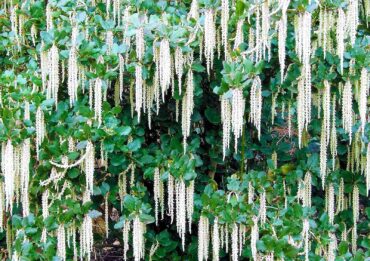
Viburnum bodnantense ‘Dawn’: Well worth the search and the purchase, it has a wonderful light scent only detected when nearby. The blooms festoon the bare branches. The flowers start out as quite small clusters, eventually opening up to small bouquets all over the shrub. One caveat: This shrub likes to become a small tree.
Viburnum tinus: An evergreen shrub, it’s often used as a screening plant or in hedging. It can become quite tall and wide. Once established, this shrub produces clusters of pale pink to white blooms, along with clusters of iridescent blue berries.
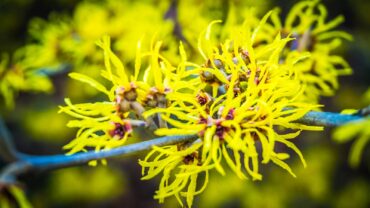
Perennials
Hesperantha coccinea: This plant has been likened to the iris family. It’s often sold as a bulb, but it grows like a rhizome. Once planted, the perennial grows and spreads profusely, but you can also control it. Clusters of blooms march up the stems. Bloom colors come in white, red, coral and pink.
Hellebores: To many gardeners, these plants are much desired in the winter garden. Hellebores continue to grow and flower for months, even into summer. The foliage colors and flower colors are endless. Every garden needs at least one of these plants.
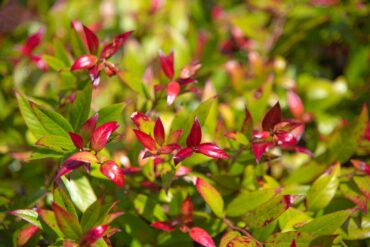
Trees
Abies koreana: With the common name of Korean fir, this tree is known for its amazing upright cones in hues of purple in the depth of winter, often along with the male catkins. The needles have a silver-green hue. This evergreen is a somewhat slow grower, but will end up 30 feet tall eventually. The upright cones remain for months. Birds especially like to nest in the inside branches because the tree provides safe shelter.
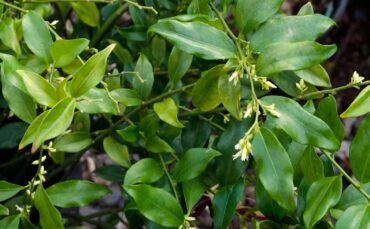
Amelanchier alnifolia: A native, deciduous plant, it can be found in both shrub and tree forms. As a tree, it takes a long time to grow tall. It’s known for blooming a leafing-out very early, usually in February. It also has small reddish berries devoured by birds in late summer. The red and yellow and gold foliage in the fall is most excellent. When a garden doesn’t have room for a tree, perhaps a shrub would work really well.
Vines
Clematis armandii: This is the vine to find this time of year. It’s festooned with a profusion of exquisitely scented white blooms that begin appearing in January and continue for nearly two months. Once established, this vine looks great growing along a chain-link fence, providing a screen by draping over the sides. You can also grow it on a trellis, but choose a very sturdy one.




